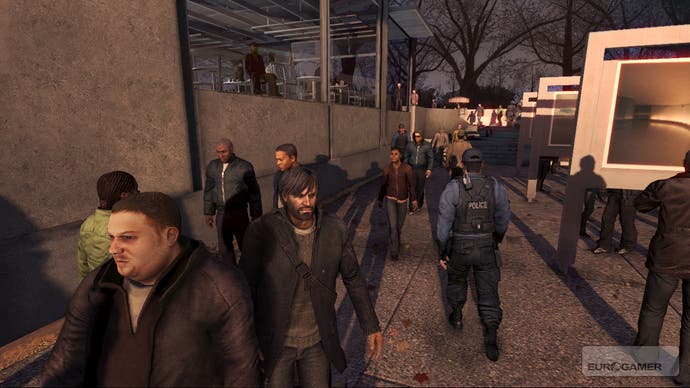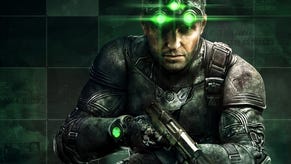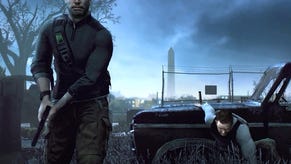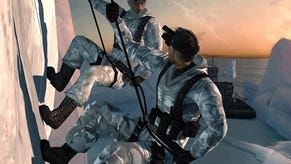Tom Clancy's Splinter Cell: Conviction
Be seeing you.
The instruction booklet for Splinter Cell: Double Agent describes 29 different actions Sam Fisher can perform. There are individual sub-sections later on dealing with hacking, safe-cracking, mine assembly, email decryption, and bomb-defusal. Overall, the game uses every single button on the Xbox 360 pad several times over.
Splinter Cell: Conviction apparently uses three.
One's for Aggression, one's for Stealth, one's for Interaction. The idea is that these three functions can account for a range of actions as broad as any other game in the Splinter Cell series. Producer Mathieu Ferland argues that far from constraining you, the new approach "opens more possibilities". The example he gives is that if your instinct is to strike an enemy, using the Aggression button, Sam might not simply whack him but could reach for an object nearby and use it to batter him senseless. "It's not exactly what you wanted to do as a movement," he says, "but is exactly what you expected as a result." There isn't even a crouch button, and you certainly won't be doing any split-jumps.
It's not just you - we could do with some more convincing ourselves. "We realised it was possible to make things more contextual," says Ferland. The team - one big team this time, in Montreal, rather than a pair of teams working separately on single and multiplayer components - envisaged a concept analogous to a sports game in terms of its philosophy. Conviction would be a game of "scripted situations with unscripted solutions". "If you're in a café in front of a table, you can press the Aggression button to flip it over; if you press the Interaction button you grab the table and pick it up; if you press the Stealth button you hide underneath it," he says.
Leaving that aside for a minute, surely by "café" he means "terrorist-controlled Georgian oil refinery" or "high-tech weapons facility hidden on the Thai/Laos border" or "arms bazaar atop the cliffs overhanging the Andaman Sea in the south of Myanmar". But he doesn't. He means café. It's a café in Washington Park, as it goes. In broad daylight. Because, as our cunning build-up masks with all the effectiveness of a bright green headset in a dark alley, Conviction watches the series' distinctive light-and-shadow gameplay follow half the button assignments out of the door.

What's happened is that Sam's been betrayed. Drawn back to Third Echelon after a couple of years minding his own business, he becomes the victim of some sort of conspiracy that leaves him a fugitive, unsupported by his former crutches. Everyone he ever worked with is now after him. He has to source his weapons and tools from the black market. He's no longer in a catsuit and the iconic night-vision headset's gone too. Instead he's wearing a hoodie, with a ragged beard and longer hair, and the section we're shown, along with the meat of the game, is about uncovering the truth without falling into the hands of law enforcement.
Quite why he doesn't just continue to creep about at night isn't explained (perhaps replacement night-vision kit isn't something the black market specialises in), but never mind that, Conviction's alternative is hiding in plain sight, using a mass of non-player characters to mask his actions and achieve his objectives, which typically include pinching documents, hacking things and following leads into protected areas. Crowds of people are the new shadows. Needing to get into a section of the Park guarded by a policeman, Sam can go up to a woman milling around outside, grab her laptop and toss it on the ground. People around him react with confusion and alarm. It's not chaos, but it's enough to attract the cop's attention, allowing Sam to circle the crowd and move into previously inaccessible territory.








.png?width=291&height=164&fit=crop&quality=80&format=jpg&auto=webp)



